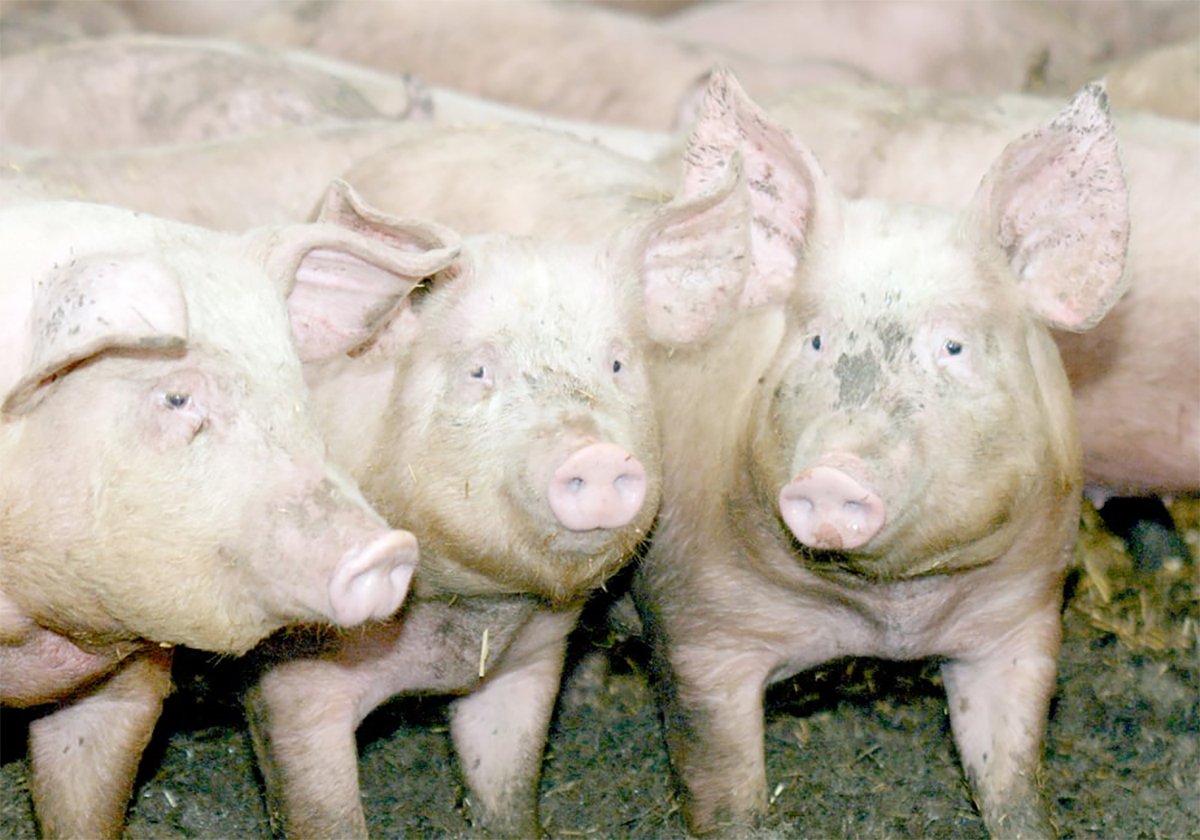Miguel de Cervantes has it right. “Tis a dainty thing to command, though twere but a flock of sheep,” he wrote in Don Quixote.
The author may have been speaking metaphorically, but making sheep go where desired can indeed be a delicate matter. It can be managed once people realize sheep are smart and adept at reading what they view as potential threats.
“I believe sheep are one of the easiest animals to handle if you understand them,” said livestock handling expert Jennifer Woods, who has her own flock of Southdown sheep that just finished lambing.
Read Also

The Western Producer Livestock Report – October 2, 2025
Western Producer Livestock Report for October 2, 2025. See U.S. & Canadian hog prices, Canadian bison & lamb market data and sale insight.
Science supports her view that sheep are smart.
In England, there’s a documented case of sheep that have learned to lie down and roll across cattle guards so they could get into nearby gardens.
They can also recognize faces, those of people as well as those of other sheep.
A British study at the University of Cambridge, noted on Royal Society Open Science, described how researchers trained eight sheep to recognize the photos of four celebrities, among them actress Emma Watson and former United States president Barack Obama.
“The results of our study show that sheep have advanced face-recognition abilities, similar to those of humans and non-human primates. Sheep are able to recognize familiar and unfamiliar human faces,” said researchers in their conclusion.
Woods noted an Australian study in which sheep learned and remembered how to navigate a complex maze, easily outdoing cattle in tests. Sheep also self-medicate by seeking out plants that make them feel better or address a nutritional need.
“Sheep are actually smarter than people often give them credit for,” said Woods during a sheep handling session organized Feb. 28 by Alberta Lamb Producers.
“Once you understand their behaviour, you will be able to handle them effectively.”
As prey animals, sheep have two main motivators: food and fear. Their reaction to the latter motivator is to flee, and their strong herd instinct generally means they run away in a tight-knit group.
Sheep do not like walking downhill, changes in footing or walking toward solid walls, said Woods, so handling techniques and facilities should be designed to avoid those stressors.
Sheep have a good range of vision. Their elongated heads and eye location allows them to see even while grazing.
Their monocular vision, unlike humans’ binocular vision, is an advantage for spotting predators and other threats but it also affects depth perception.
Woods said that’s why sheep will lower their heads to gauge the depth of a puddle or a step, and it’s also why they lose depth perception when they are moving. Shadows, puddles and elevation changes are thus a major impediment to smooth sheep movement.
Producers should also be aware that heavy wool around the head will further impede the animals’ vision so handling has to be adjusted accordingly.
Woods discussed the importance of understanding the sheep flight zone. Moving in on a herd too quickly or coming too close is likely to cause problems.
But even when the handler is doing everything right, sheep tend to jog or run away.
“It is kind of a sheep thing. They don’t always walk quietly like cattle do.”
The size of a sheep’s flight zone is determined by:
- amount of contact with people
- quality of human contact
- genetics
- familiarity
- offspring
- current environment
Woods said flight zones will be smaller if sheep have a quiet, familiar handler, and will also be smaller when they are in a familiar environment. Some breeds tend to be higher strung than others, she added.
Common sheep-handling mistakes include moving too quickly, waving arms and trying to move too many animals at once.
Woods said it can be faster to move sheep in several smaller groups rather than attempt to move an entire flock. Controlling the lead animal is key because sheep will not respond well when pushed from the back.
She also cautioned against attempting a rush tactic to force sheep into a gate, pen or trailer.
“Just get the main core group moving and most of the time everybody else will come along.”
Sheep must never be kicked, struck or slammed by gates, nor should they be handled by grabbing wool, which can cause carcass damage. If things go wrong and the sheep go someplace other than intended, it might be best for the handler to take a break before making another attempt.
“If you have 15 minutes to move sheep, it will take you an hour. If you have an hour to move sheep, it will take you 15 minutes,” said Woods.
She gave specific advice on handling rams, which can be dangerous if mishandled.
Bottle-raised rams in particular can be dangerous because they tend to butt, press their heads against people and push. Ram lambs should never be allowed to jump on people, no matter how cute their behaviour, said Woods. Bottle-raised rams should be castrated.
Rams should not live alone because boredom can lead them to bash buildings, jump fences and butt people or other animals. Wethers or goats can be suitable companions for lone rams.



















